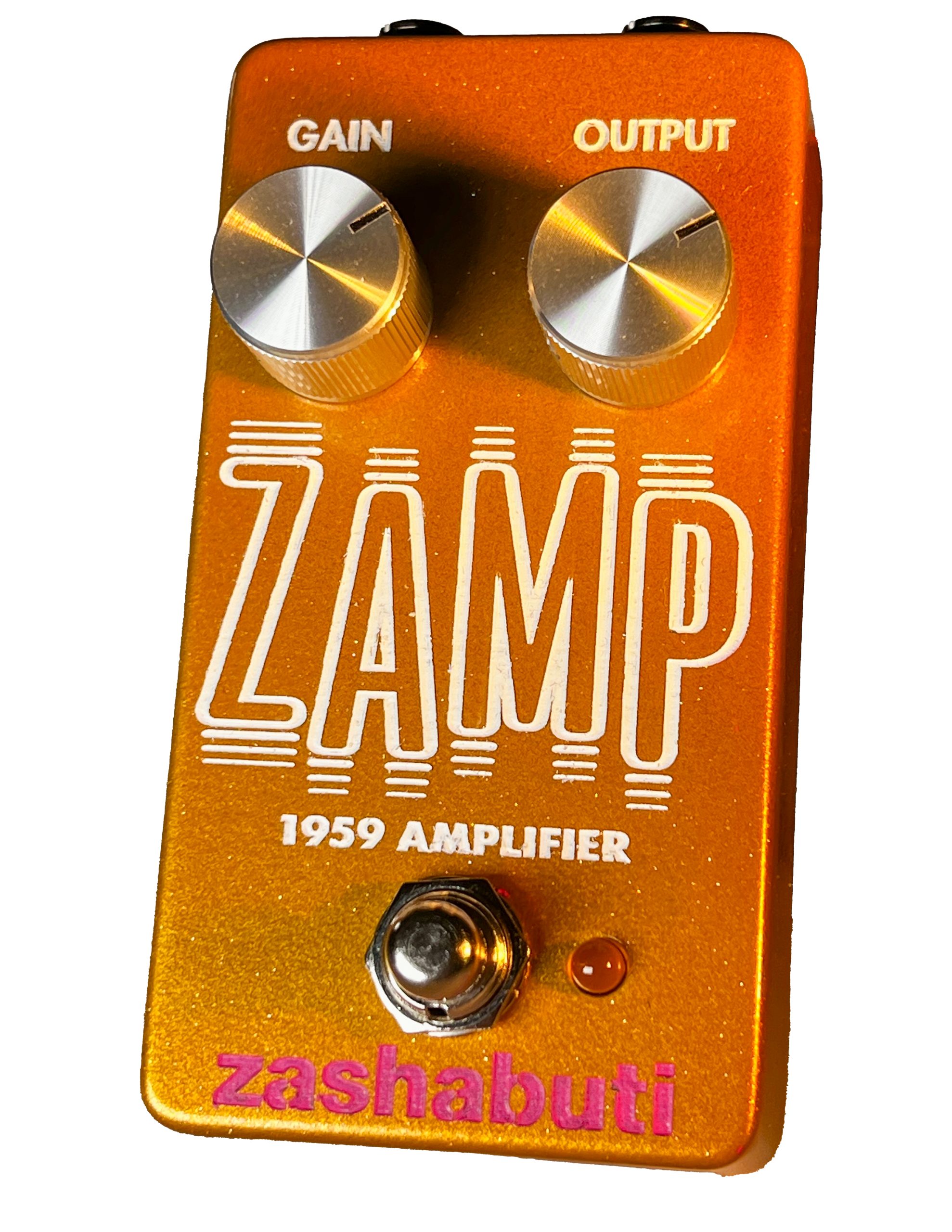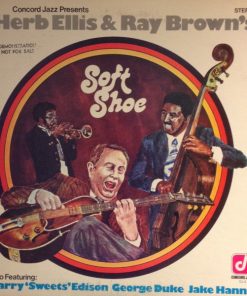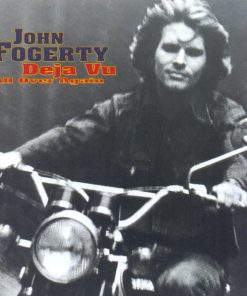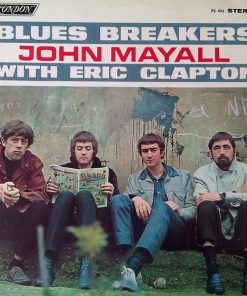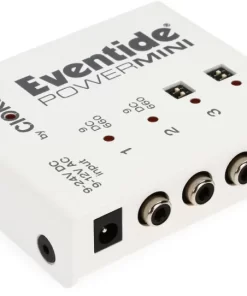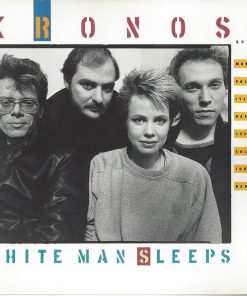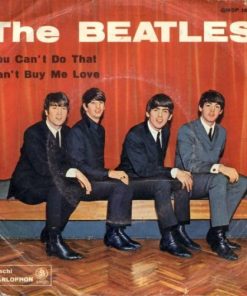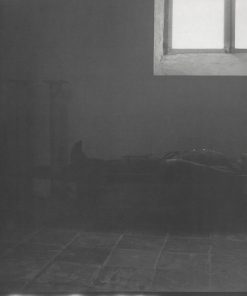HOLIDAZE SALE till 12/31 ! Zashabuti – ZAMP – 1959 Analog Tweed Guitar Amplifier Effect Pedal
$199.00
11 in stock
Zashabuti is thrilled to announce the launch of the ZAMP, a groundbreaking amp-in-the-box pedal that delivers the cherished sound of 1950s Fender Tweed amplifiers.
For musicians seeking to capture the magic of rock’s golden era, the ZAMP brings legendary tones right to your pedalboard, offering an authentic playing experience that pays homage to the greats.
As the world’s first true analog tube emulator, the ZAMP meticulously recreates the entire tube chain and tone stack of these classic amplifiers with Jensen speaker emulation.
This innovation marks a new era in analog pedal design, offering musicians the best of both worlds – vintage tone with modern reliability.
Imagine dialing in the iconic sounds of The Eagles, The Rolling Stones, Steely Dan, Eric Clapton, and Neil Young—all without the high cost and maintenance of vintage gear. Designed as an all-in-one DI amp-in-a-box solution, the ZAMP eliminates the need to lug around a traditional amplifier. Get rock legend sounds for the same cost as buying a set of tubes.
Versatile and Practical Use:
- As your main amp: Plug directly into a PA or DAW for full-bodied sound with Jensen speaker emulation.
- In front of your existing amp: Use it as an overdrive/distortion pedal to impart tweed grit and grind.
- Straight into your recording setup: Achieve studio-quality sound with ease—no need to mic an amp.
- 12dB clean boost: Enhance your tone with a powerful clean boost.
- Versatile instrument compatibility: Works beautifully with violin, mandolin, keyboards, and even vocals.
- Tube preamp for recording: Use it as an insert or on your buss for added warmth.
- Clean DI box functionality: Can be used as a reliable direct input box for live or recording applications.
Key Features:
- True analog circuitry: Faithfully emulates two 12AX7 preamp tubes, one 12AX7 driver tube, and two 6V6 output tubes.
- User-friendly controls: Simple gain and output controls make it easy to dial in the perfect tone.
- Authentic iconic tones: Experience everything from sweet cleans to exploding overdrive; tones that shaped rock, blues, and jazz, right at your feet.
- Perfect for any scenario: Whether at home, on stage, or in the studio, the ZAMP delivers cranked tube amp tones at any volume.
- No need to mic your cab: Just plug in and play into a PA or your DAW.
- Non-digital / pure analog sound: Experience the warmth and clarity of true analog without the latency or ear fatigue caused by digital gear.
- Extended battery life: Operates on a standard 9v- power supply or up to 40 hours with a single 9v.
- Reliable performance: Say goodbye to fragile tubes and expensive repairs.
- Compact and portable: Take your vintage tone anywhere without the burden of heavy equipment.
About Zashabuti:
With a team of experienced engineers and innovators from leading companies in the music industry, Zashabuti is dedicated to designing products with a deep respect for the classic sounds of the past, combined with the best of today’s technology. We strive to create products that inspire and elevate your musical journey.
ZAMP MAP: $199 USD MSRP: $269
ZAMP is the world’s first analog tube amplifier emulation built into a small pedal format – true tube amp tone without the glass, high voltage and $10,000 vintage price tag.
It is not a glorified overdrive – distortion pedal shunting an op-amp with diodes or with FETs trying to be an amplifier.
ZAMP contains real analog circuits emulating two 12AX7 preamp tubes, one 12AX7 Cathodyne driver and two 6V6 output tubes.
Our technology enables us to build classic tube amplifiers from scratch.
ZAMP is our homage to 1950’s TWEED amplifiers, showcasing the beautiful cleans, smooth crunch and raunchy grind that these amps are known for creating.
ZAMP is designed to work as a pedal in front of your amp, direct into active speakers/PA, and direct into your DAW for recording/re-amping.
Early Reviews:
“You have created a masterpiece.”
GL Smith – Northwest Vintage Guitars
“It’s a tool in my toolbox I can’t live without”
Glen Hoover – blues guitarist : Curtis Salgado / Saeeda Wright
“The Zamp guitar amp pedal stands out as nothing short of extraordinary. Its performance in live video sessions transcends the conventional, rendering the need for a physical amp obsolete while faithfully embodying all the quintessential characteristics of a tube amp. This unparalleled quality eliminates any reliance on amp and speaker simulation plugins during direct signal mixing.
In the realm of live performances where a subdued volume is imperative, the Zamp proves to be a game-changer. Directly interfacing with the PA system, even at low volumes, it effortlessly delivers that coveted tube tone, requiring minimal adjustment – often opting for a flat EQ setting. This versatility extends to my use of the Zamp as an overdrive pedal during live shows, showcasing a remarkably smooth overdrive when cranked to the maximum setting. The overall experience with the Zamp is not just functional but also deeply gratifying, adding an element of fun and inspiration to every musical endeavor.”
Jason Goessl – jazz guitarist
hear Jason play the ZAMP w/a guitar solo at 2:09 on YouTube: Remember, It’s Christmas | Fox Menagerie original | ft. Shan Fiorello
DEEP SPECS:
For scientific and super curious types:
ZAMP is a 1950s tube guitar amplifier using an audio chain of six individual circuit blocks.
Stage 1 is a low noise and low distortion input buffer with a 1M Ohm input impedance to be consistent with typical tube amplifier inputs. This is a critical point as it has a serious effect on the resonance of passive guitar electronics. The phenomenon generally referred to as “tone suck” by guitarists is often related to this resonance as opposed to simple filtering as an effect of loading. Passive guitar pickups form a complex impedance that causes unexpected effects with loading. Active pickups are not affected by loading in general and operate normally into the buffer. The 1M Ohm standard allows most passive guitar pickups to operate normally. Pickup loading for effect should be done from inside the guitar, not at the end of an in instrument cable.
Stage 2 and 3 are the 12AX7A and 12AX7B tube emulators. The two stages represent both halves of a 12AX7 working together to produce the harmonics and amplification of a typical late 1950’s amplifier front end. These stages also create the classic vintage tube amplifier “clean sweet spot” region which is the result of dynamic low order distortion cancellation that also creates the first stage contribution to the iconic “tube compression” effect so coveted by guitarists.
Stage 4 is an electronically logarithmic volume control that drives the stages that follow while giving a linear feel to the control from the user’s perspective. This stage also has the property of lowering the noise along with the audio level as opposed to passive volume controls that have a signal to noise ratio that degrades as the volume is lowered.
Stage 5 emulates 3 tubes; the 12AX7 (half) Cathodyne style polarity inverter (often wrongly called a “phase inverter”), and the two 6V6 output tubes forming the push-pull stage. The “drive” control is performing the function of the real tube amplifier’s “Volume” control to drive the output stages. This is a significant point regarding the ZAMP’s ability to have the feel of a real tube amplifier as volume increases.
Stage 6 is the second electronically logarithmic volume control that gives output level compensation as well as providing the line driver for the output jack. The output impedance is limited to 100 Ohms to provide stability when driving long cable runs. The output level range of the ZAMP is -infinity to +11 dbu. This is quite respectable for a 9 Volt powered device without the use of voltage conversion devices which can cause nightmares of cost, complexity, and noise.
POWER:
The ZAMP can be powered by an external 9 Volt power supply or an internal 9 Volt battery.
All of these sources feed a reverse polarity protection diode (Schottky) which feeds a precision 8 volt regulator. The regulator allows a range of 9 to 18 volt supplies to be used while maintaining consistent performance and low noise. When powered by a 9-volt battery the ZAMP will run for approximately 40 hours when using an Energizer 522 Alkaline 9 Volt battery. Non-Alkaline battery chemistry and/or lesser quality batteries can affect the run time significantly. The ZAMP will run at voltages down to about 4.5 Volts while losing gain and volume as if running actual tubes. This means that the player will perceive the lowering battery voltage as the pedal gradually loses it’s impact and volume giving a very gradual warning without actually failing.
The ZAMP’s behavior with declining supply voltage is not what one normally expects from an analog pedal. The typical behavior would involve the onset of “clipping” which the ZAMP does not do. The ZAMP is designed to keep all Op-Amps and other circuits that can “clip” at levels that do not allow it. All overload is based on infinite logarithmic limits that produce low order harmonics as tubes do. The ZAMP never “clips” and for that matter vintage guitar tubes don’t either. This would involve levels of negative feedback not found in such amplifiers.
| Weight | 15 oz |
|---|---|
| Dimensions | 5 × 3 × 2 in |
Related products
To Be Sorted
To Be Sorted



